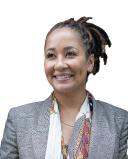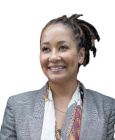Education
Real Social Emotional Learning in Schools
Personal Perspective: SEL is a hot word in education, but its implementation is often lacking.
Posted July 8, 2024 Reviewed by Devon Frye
Key points
- Social emotional learning (SEL) is a popular catchphrase in education.
- SEL is more than "active listening" and "making friends."
- Educators need support to implement SEL.
.png.jpg?itok=A3RkWTQ8)
Administrators often require educators to implement social-emotional learning (SEL) in schools, libraries, camp programs, and wherever children exist. But I argue that institutions are causing harm by not understanding the meaning of “social-emotional learning" and by not supporting effective implementation methods.
In 2013, social work colleagues and I were placed at a predominantly Black school in the Bronx school, tasked with implementing a curriculum by an education department of an Ivy League institution. This sounded good to me—it was great to have it all done for us. They even sent us multiple copies of the books we would read for each lesson.
The lessons included learning objectives, feelings check-ins, activities, discussion questions, outcomes, and a closing activity with takeaways. It was incredibly helpful. I did not have to come up with and prepare entire hour-long lessons of life skills material. I could focus on my teaching style—as a social worker, I wasn’t used to being in front of a classroom of 25 children, so having these lessons made it a bit easier.
The curriculum even had characters and vocabulary that would become part of the children’s lexicon and classroom strategies we would teach in the lessons, alongside classroom teachers, to be able to implement during moments of big feelings throughout the school day.
While the curriculum was written to be accessible for any child, it felt as if there was an undertone in the curriculum and the school directed at Black children specifically: We need to teach these children how to act... better. Most of us were Black educators, including the principal, but there were problematic class differentials at play. We were told we had to achieve Black excellence—even if that meant becoming militant with the children. We were told that the SEL curriculum was to help us teach children how to act, "since their parents didn't have the tools to do so."
The program also had some glaring holes that made it challenging to deal with the realities of the children's lives. When a child came to school after their building burnt down to the ground and neighbors died, the curriculum had lessons on empathy we could use, but nothing intense enough for a situation like that. We had to be creative in supporting the child, the child’s friends who were worried about their own homes, and a school that wanted to rally for this family. Where was the material that children actually faced in the world, outside of “Making and Keeping Friends” or “Managing Angry Feelings”?
I found myself creating new lessons and inserting real-life material, like “What Do We Do When a Family Member Goes Away,” when I found out a student I had known for years had a father in prison. I incorporated texts like Visiting Day and My Daddy Went to Jail and I learned three other students visited siblings and step-parents in prison.
It was clunky and I was testing it out all on my own, but I had to do it. As a cis-hetero Black, first-generation immigrant educator with class and able-body privilege, I knew I didn’t get enough of these conversations, and my students were not getting them either.
After having talks about having a family member "away," I also had to talk to my students about mass incarceration. Some students believed jail was an inevitable experience for them, but they didn’t know why they thought that. We had to go there—into the history of the carceral system and how it started with slavery, and how Black communities have been criminalized and stigmatized. Then we had to talk about how white people commit crimes, too, despite my students’ beliefs that they didn’t. We had some difficult, even ugly conversations—with kindergarteners and fourth graders.
I had to swiftly become proficient in things I was teaching myself. I re-read The New Jim Crow, this time with the intent of translating it into learning objectives. I had to help the adults in my school building be able to talk about the world and get into the cavernous and scary pit of harmful history and the world’s current events with fidelity. I had to deal with my own biases and beliefs around incarceration.
In other words, my students and I moved far beyond “active listening,” and benefited from doing so.
SEL can be useful in education and counseling, but it often needs to be adjusted and improved. There are plenty of ways to do that, but here are just a few suggestions:
- Find out what your clients or students are experiencing in their homes, neighborhoods, and states. As mentioned, I knew my students for years but missed this very real experience of having family members in the carceral system. What are you missing?
- Take your conversations or lessons further. Children can also learn about things that you may not think relate to their lives. What a wonderful way to learn about the world, with a trusted adult who can provide a safe space to talk about hard things, including injustices like poverty and food scarcity. Children can all relate to loss, grief, and dying. How can they learn to show up for their community and provide care in times of need?
- Learn more about the world and bring it to the classroom or therapy room. What might children be seeing on the news while at the mechanic with their parents? How might conflicts in the world relate to their conflicts in the classroom?
SEL can be done well. It takes effort, and, of course, teachers and other educators have enough to think about. But the children do indeed depend on it.




